
INDIA AND CHINA -
LOOKING BELOW THE SURFACE TO COMPARE THESE TWO RISING ASIAN BUSINESS GIANTS 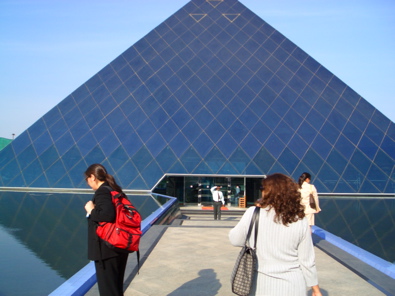
 (Picture left) Infosys campus in India, and (picture right) A street in New Delhi India has emerged as a trading superpower and as an increasing magnet for FDI. Its role in the international economy to this point has been less remarked than the rise and dominance of China but increasingly India will be appreciated for the opportunities it is creating for its citizens, employers and foreign and domestic firms. At first glance, India doesn’t look like a major trading superpower or a place where your company should be considering siting a factory. Major complaints heard by visit execs often involve the poor state of infrastructure, the chaotic traffic, that the democratic process hinders development, that corruption is endemic and that bureaucracy is rampant. To this, many manufacturers must factor in that relations between China and India are formal but not warm and that apparently neither side trusts the other, which to this point has limited either location from generally serving the other for exports.
With this in mind, lets compare the two countries by size: China is the world’s third-largest country after Russia and Canada and is the second largest country by land area. India is about a third of China’s size. In terms of population, China tops India at 1.3 billion people compared to India at just over 1 billion but India is growing at a faster rate and has a younger population. In terms of political systems, China is a communist country which economically is following market reforms that encourage free trade and capitalist-based business models. India, by comparison, is the world’s largest democracy, but with a system of commerce that until the 1980s was based on the Soviet model and has since been reforming itself to follow more free trade and capitalist-based models. China has been reforming its economy since 1978; India has been working since 1991 but at a faster rate of speed.
 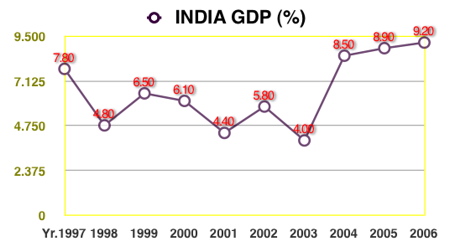 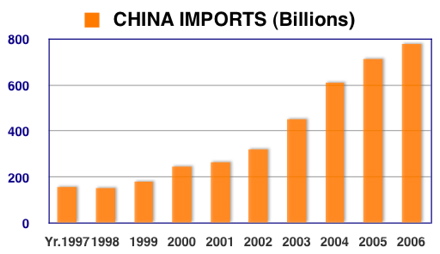 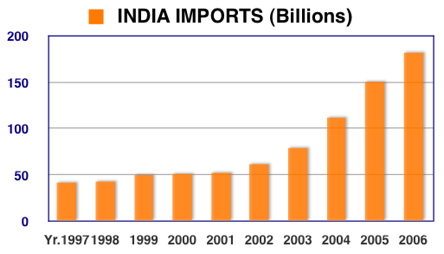 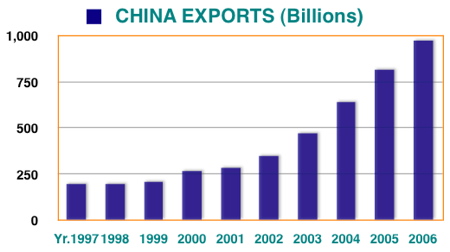 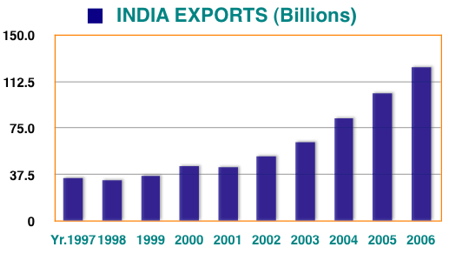 As can be seen, China is by far the bigger economy, the bigger exporter and the bigger importer but don’t assume that all the advantages go to China. Here are some differences to consider: Tax Regimes
As can be seen, India has introduced a tax regime that is vastly more advantageous in the Special Economic Zones than China. Another benefit of India over China with respect to locating in the Special Economic Zones is that India does not discriminate between manufacturing and services and either can offer the above incentives, which is not the case in China. (Service companies are treated less favorably in China for incentives.) Company Development Tax incentives are not the only area that India is ahead of China in. Generally, Indian capital markets far exceed their Chinese counterparts in terms of transparency and predictability. Indian companies can list domestically on the Bombay Stock Exchange, Asia’s oldest exchange. China has both the Shanghai and Shenzhen stock exchanges. Shanghai is larger than Bombay in terms of capitalization (Bombay has US$1 trillion with 4,833 companies and Shanghai has US$1.7 trillion with 849 companies) but what differs the two exchanges is not just their size but that Bombay is run to international standards and has tremendous stability in the quality of its companies. On the other hand, China’s Securities Commission has no powers to impose punishments, which must be imposed by the courts. Further as the government is the major stockholder of its State-owned enterprises all these firms are not subject to independent policing and true financial analysis meaning that the value of many of these firms is suspect. This means that generally India has the more transparent economy. Company Management Capabilities India, however, is not only ahead in financial transparency. Although there are many excellent Chinese companies, generally the management abilities of many Chinese businesses is not as strong as their Indian counterparts. Part of this is due to the fact that reform in China started barely 30 years ago and that management training has not become of interest till recently. Also, it is a factor that in many respects it is the rest of the world that came to China to produce in the last decade and not China’s homegrown export industry that has driven exports. In fact, if one looks at cross-border activity, China has yet to become active in acquisitions to-date, although there is indications this is starting to change. Big acquisitions by Chinese businesses include Lenovo’s takeover of IBM’s PC business and more recently the Chinese acquisition of an interest in Blackstone, which is a different twist on things. On the other hand, Indian companies have been on a tear building up international assets and expanding throughout the world. Recent examples:
As can be seen from the above examples, Indian companies are actively becoming world players. Chinese companies really can’t match the breadth or the depth of acquisitions and this is giving Indian companies a lead over their Chinese counterparts. Communication Despite what some Europeans, and especially the French, have come to think; English is the international language of business and one of the further reasons for India’s success is the fact that Indian businesses generally speak it at all levels and with a high degree of precision, while Chinese businesses do not. Although Mandarin is the world’s most spoken native language, with some 874,000,000 native speakers, it is also spoken in only 16 countries in any substantial proportion of the population and those are all in Asia. English is the world’s third largest spoken language with over 380 million people speaking it natively. Despite the fact the absolute total is much less, the spread of countries – 104 speaking English in a high proportion of the population and 71 as an official language – is six and a half times greater than Mandarin and over 600 million people speak English as a second language, including 89% of current students in the world’s other developed powerhouse, the EU. The fact is that Mandarin is still a regional Asian language and not a world language in the same way as English is. On the Internet, the difference is even more striking: Native language:
English
Number who has Internet access: 287.5 million Percentage of World’s online population: 35.2 % Native language: Other European Number who has Internet access: 276 million Percentage of World’s online population: 37.9% Native language: All Asian languages (including Mandarin) Number of world online population 240 million Percentage of World online population: 33% 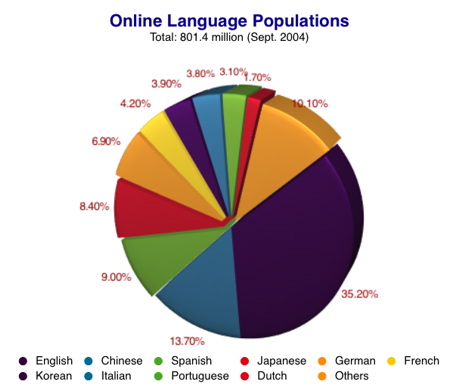 Source: Global Reach
(global-reach.biz/globstats)
Global
Internet Statistics
(by Language) ASIAN LANGUAGES
As can be seen from the above, Chinese (including Mandarin and Cantonese) is only 13.7% of the online population while English is 35.2%. Finally, over 80% of scientific articles are published in English, up from only 60% fifty years ago. Indian managers’ ability to communicate easily in English gives them a tremendous advantage and India is making skilled use of that advantage. As can be seen from the above, on the surface, China looks like the stronger player but some of that difference is veneer only. India does have advantages in many areas and these areas are generally the sorts – finance, management, and communications - that have effects throughout the system. For these reasons, we believe India cannot be ignored. Here are our projections and our recommendations: a. India’s economic growth will move roughly equal to Chinas at 10 % by 2008 but will then exceed China’s as China’s economy slows to less than double digit figures b. India will increasingly start to replace China as a site for lower-end export manufacturing and for projects that have higher content of labor c. Indian companies will continue to globalize at a faster rate than their Chinese counterparts. d. Every company needs an India strategy – both for sourcing, review for potential factory relocation and long-term as a sales base. About the Author: |

